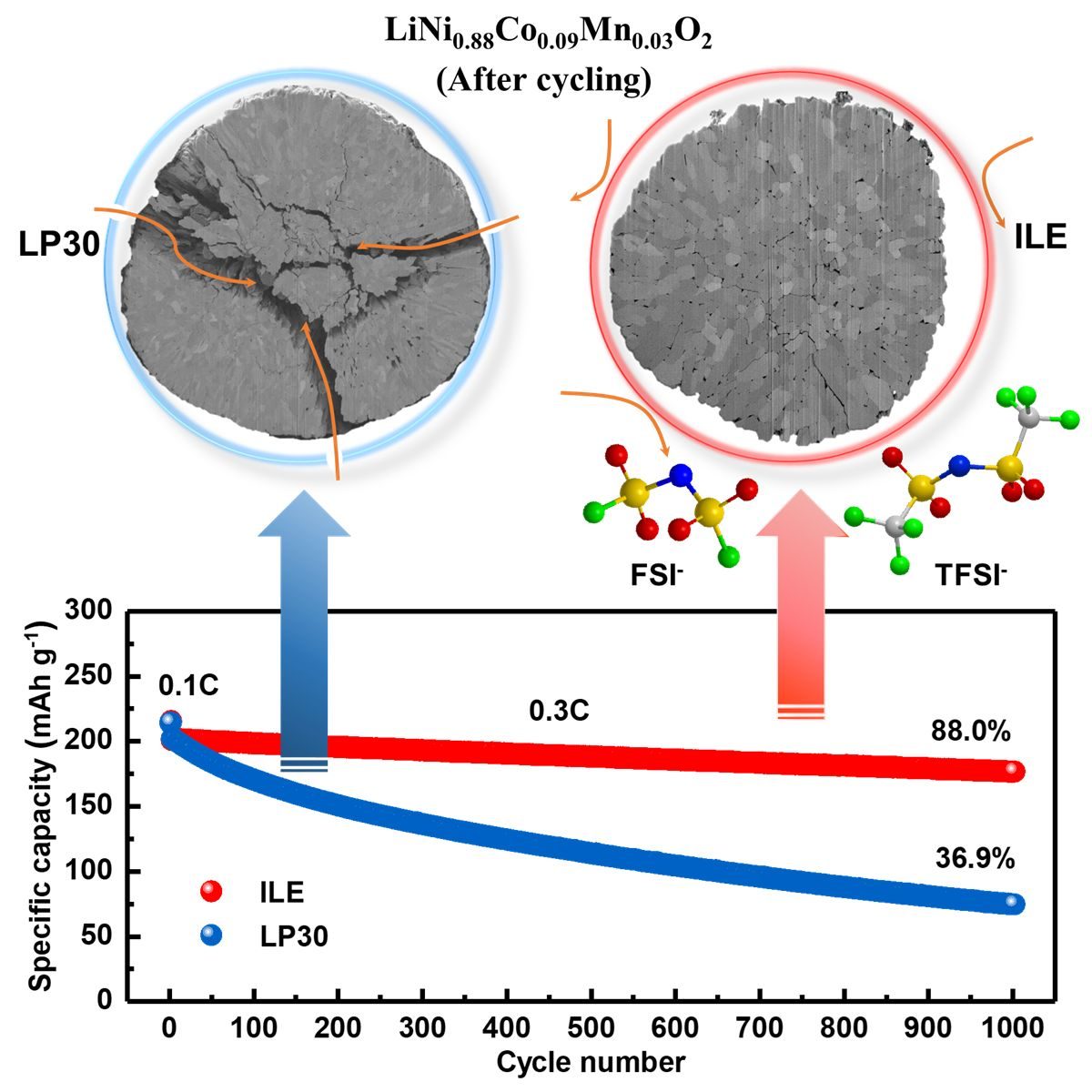From pv magazine Global
Researchers from Germany’s Karlsruhe Institute of Technology (KIT) and the Helmholtz-Institut Ulm (HIU) have built a lithium-metal battery with a new combination of cathodes and electrolytes, which they claim can help the device reach an energy density of 560 watt-hours per kilogram.
The battery is based on a low-cobalt, nickel-rich layered cathode known as NCM88, which the scientists said offers a high energy density and improved stability for the battery compared to commercially available organic electrolytes known as LP30. “In the LP30 electrolyte, particle cracks occur on the cathode,” HIU professor, Stefano Passerini explained. “The electrolyte reacts within these cracks and destroys the structure and thick, moss-like lithium-containing layer forms on the cathode.”
According to the researchers, this reaction negatively impacts the battery stability and is currently the main issue preventing their technical and commercial maturity. In order to address this matter, they used a low-volatility and non-flammable ionic liquid electrolyte (ILE) incorporating two anions known as bis(fluorosulfonyl) imide (FSI) and bis(trifluoromethanesulfonyl)imide (TFSI).
They further explained that the combination of the new cathode and electrolyte favours the formation of a cathode electrolyte interphase (CEI) layer in the electrolyte which protects the NCM88 surface against detrimental reactions with the electrolyte itself, thus avoiding the formation of microcracks. The dual-anion electrolyte is also said to show compatibility with the lithium metal and the high-voltage positive-electrode material used for the device.
“This electrolyte enables initial specific capacity of 214 mAh g−1 and outstanding capacity retention of 88% over 1,000 cycles with an average Coulombic efficiency of 99.94%,” the German group said, noting that the new configuration of the electrolyte significantly reduces the structural changes in the nickel-rich cathode. The Coulombic efficiency is the ratio of discharge capacity to charge capacity within the same cycle.
All the details on the battery can be found in the paper Dual-anion ionic liquid electrolyte enables stable Ni-rich cathodes in lithium-metal batteries, which was recently published in Joule.
This content is protected by copyright and may not be reused. If you want to cooperate with us and would like to reuse some of our content, please contact: editors@pv-magazine.com.









By submitting this form you agree to pv magazine using your data for the purposes of publishing your comment.
Your personal data will only be disclosed or otherwise transmitted to third parties for the purposes of spam filtering or if this is necessary for technical maintenance of the website. Any other transfer to third parties will not take place unless this is justified on the basis of applicable data protection regulations or if pv magazine is legally obliged to do so.
You may revoke this consent at any time with effect for the future, in which case your personal data will be deleted immediately. Otherwise, your data will be deleted if pv magazine has processed your request or the purpose of data storage is fulfilled.
Further information on data privacy can be found in our Data Protection Policy.